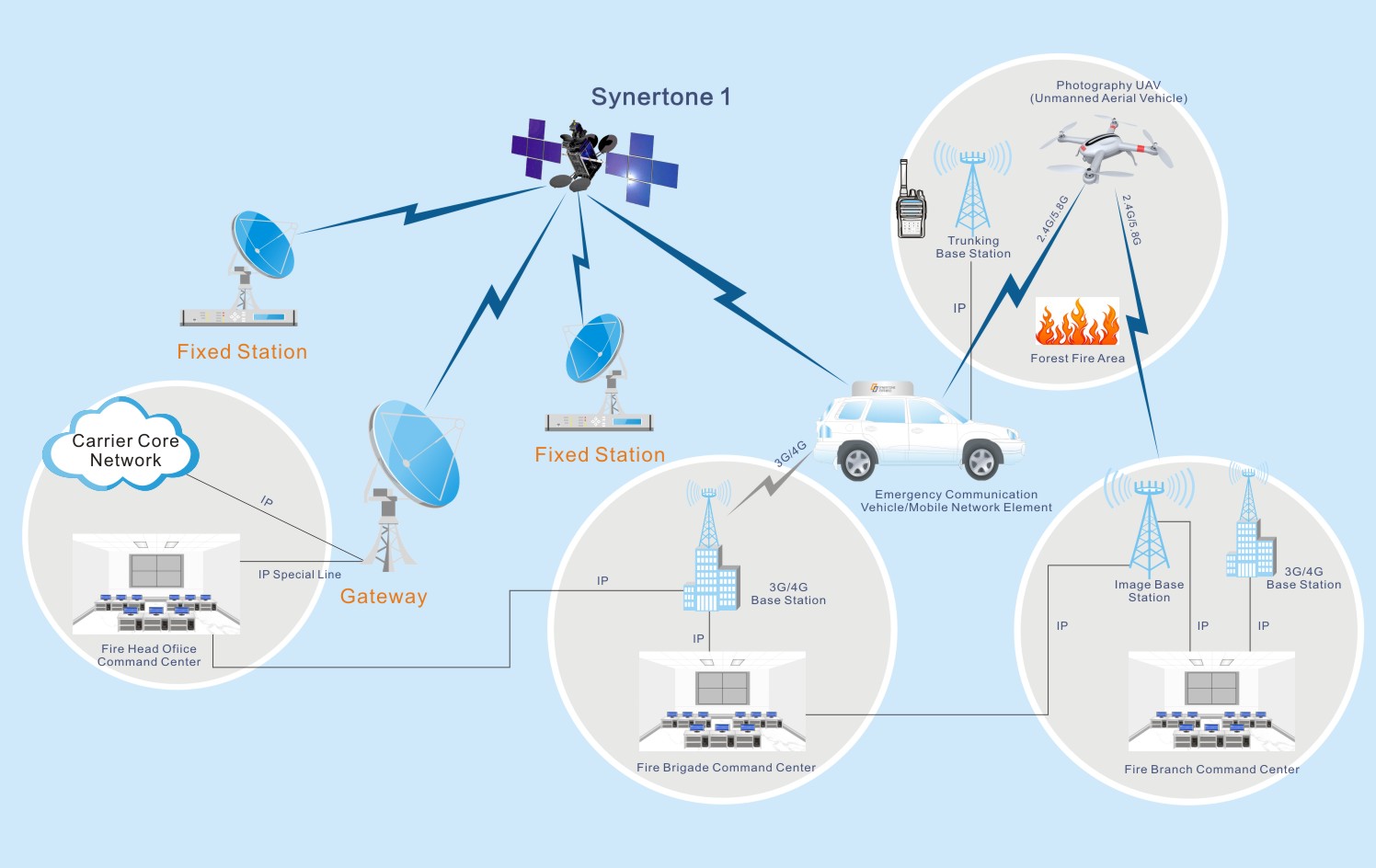The forestry department undertakes the responsibilitiesfor protecting forest resources and promoting healthy development of the forestry economy. Forest regions in China are highly concentrated with a wide range. Once disasters occur, hazard sources must be screened and hazard areas should be located at the first time. Forest firefighting has an increasing demand for communications. The forestry communication system is constructed based on the communication network of multiple technologies. The system focuses on a emergency communication system that combines air and ground, wired and wireless, and fixed and flexible to enhance the coverage and transmission of forest firefighting communications and ensure that multiple communication methods can be used for smooth fire information transmission, minimizing loss of forest fires.
To meet increasing requirements of the forestry industry and improve the working efficiency of forest firefighters for unified commanding, Synertone provides a set of entire province connected, highly reliable, easy-to-use and powerful digital wireless communication system solution for forestry users. The solution includes the digital IP interworking system, trunking simulcast system, and space-land integrated video transmission system. These three systems connect each other through wireless channel and fiber cable; when emergency happens, the audio and video information can be transmit in time,which will help the command center make a quick response. The provincial, municipal, and county-level (district, city) scheduling management and control centers can conduct remote scheduling and management on terminals of forest protection personnel within the regions, including the call control function (single call, group call, general call, and emergency alarm) and data application management (short message sending, GPS location information, and attendance management). In addition, the system can check the running status of each base station and maintain configuration parameters in the base stations through the IP network.
Trunking simulcast system: The trunking simulcast system is a communication system that covers different areas. With the help of several mobile cluster base stations, the system provides more efficient coverage than fixed base stations. Base stations in the system send and receive signals at the same frequency; mobile users do not have to perform cross-regional handover or location registration when roaming between different base stations and call drops do not happen. Unlike trunking cellular communication that requires a complex signaling system, the trunking simulcast system has a simple structure and can be used for applications with fewer frequency-occupied resources, wider coverage, and less communication traffic of forestry users.
Digital IP interworking system: IP interworking connects several fixed NEs through TCP/IP-based Ethernet for a wider range of communication. It has a simple structure and is used for applications of large scale and multiple base stations for forestry users.
Space-land integrated video transmission system: Cameras on drones are used to collect onsite images and the video transmission module transmits videos to nearby base stations and communication vehicles through the wireless transmission technology. In addition, fixed NEs in the base stations and communication vehicles can send onsite images back to the forest firefighting commanding hall.

-Multi-polarized scheduling, layered and hierarchical management.
-Seamless roaming of terminals for easy fire rescue.
-Full IP networking that supports multiple transmission links, such as IP, E1 and wireless links.
-Complete interworking functions for the system to connect to other systems through different gateways.